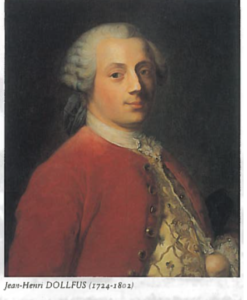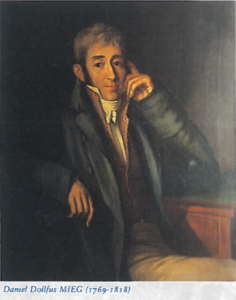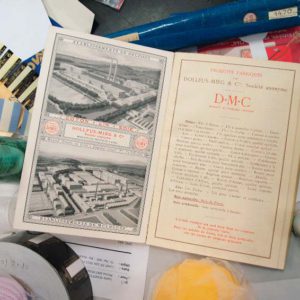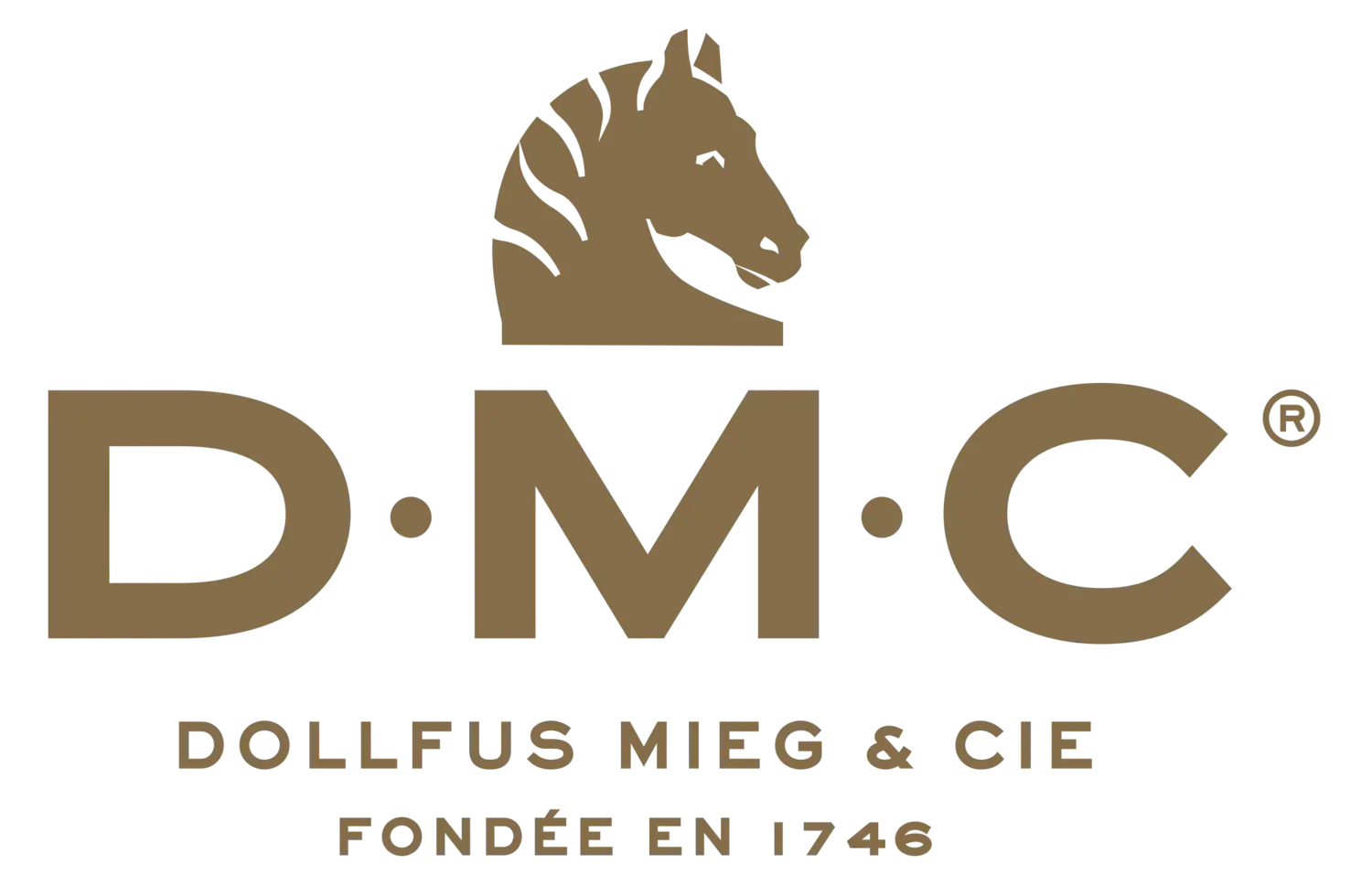ABOUT DMC
It is in 1746 that the DOLLFUS family textile story begins…


Jean-Henri DOLLFUS, together with two entrepreneurs Jean-Jacques Schmalzer and Samuel Koechlin, from the Mulhouse region of Alsace, takes advantage of the fashion for hand-painted fabrics, and pioneers the industrial manufacture of printed “Indian” fabrics in Europe.
For many years, the business thrived solely as a fabric printing business and was run jointly by the two brothers, Jean-Henri and Jean Dollfus. Their vision for the company was to export their fabrics to all parts of the world.
Near the end of the 18th century, Jean-Henri Dollfus’ nephew, Daniel Dollfus, took over the business. Joining his wife’s, Anne-Marie Mieg, name with his, he gave the company the new trade name of Dollfus-Mieg & Compagnie, or D.M.C.
The Dollfus-Mieg et Compagnie concentrated on printed textiles for nearly a century, but in 1841 began production of sewing thread. This gained importance when the company bought the patent rights to a process called mercerization wherein cotton thread passes through caustic soda, giving it strength, longevity and a silky appearance. The thread could also be more easily dyed and rivaled silk yarns in appearance. Before the end of the century, DMC had established itself as one of the world’s premier producers of sewing threads and decorative yarns.
Furthermore, DMC established strong links with the famous embroiderer, Therese de Dillmont which enhanced the company’s reputation. In 1898, embroidery floss was introduced.
By the early 20th century, DMC achieved worldwide dominance of the thread and printed fabric market. Its products were available in more than 100 countries, and its sewing threads enjoyed a near monopoly of many of the company’s markets.


Jean-Henri DOLLFUS, together with two entrepreneurs Jean-Jacques Schmalzer and Samuel Koechlin, from the Mulhouse region of Alsace, takes advantage of the fashion for hand-painted fabrics, and pioneers the industrial manufacture of printed “Indian” fabrics in Europe.
For many years, the business thrived solely as a fabric printing business and was run jointly by the two brothers, Jean-Henri and Jean Dollfus. Their vision for the company was to export their fabrics to all parts of the world.

Near the end of the 18th century, Jean-Henri Dollfus’ nephew, Daniel Dollfus, took over the business. Joining his wife’s, Anne-Marie Mieg, name with his, he gave the company the new trade name of Dollfus-Mieg & Compagnie, or D.M.C.

The Dollfus-Mieg et Compagnie concentrated on printed textiles for nearly a century, but in 1841 began production of sewing thread. This gained importance when the company bought the patent rights to a process called mercerization wherein cotton thread passes through caustic soda, giving it strength, longevity and a silky appearance. The thread could also be more easily dyed and rivaled silk yarns in appearance. Before the end of the century, DMC had established itself as one of the world’s premier producers of sewing threads and decorative yarns.
Furthermore, DMC established strong links with the famous embroiderer, Therese de Dillmont which enhanced the company’s reputation. In 1898, embroidery floss was introduced.
By the early 20th century, DMC achieved worldwide dominance of the thread and printed fabric market. Its products were available in more than 100 countries, and its sewing threads enjoyed a near monopoly of many of the company’s markets.
